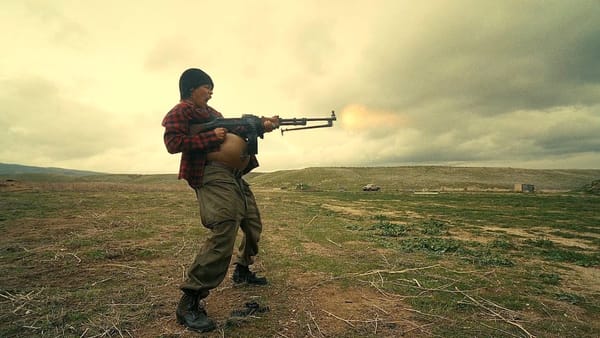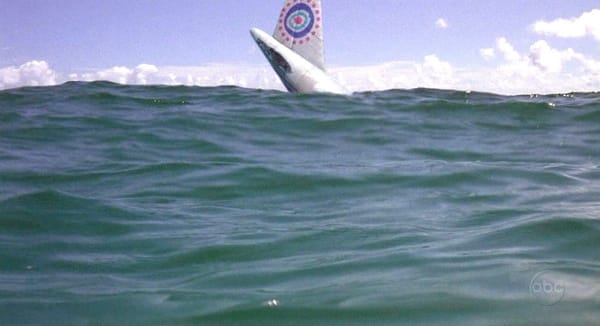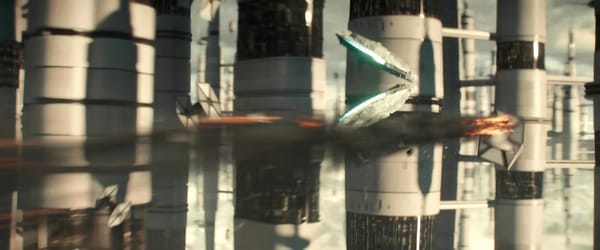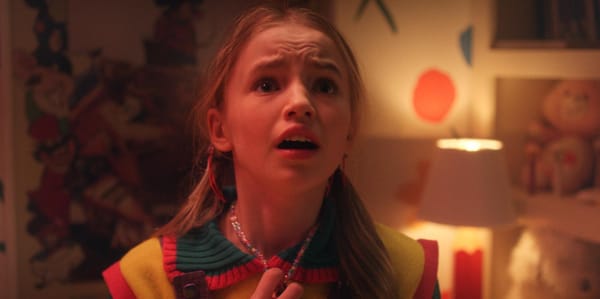Everyone’s in your head
Thoughts on the simulation
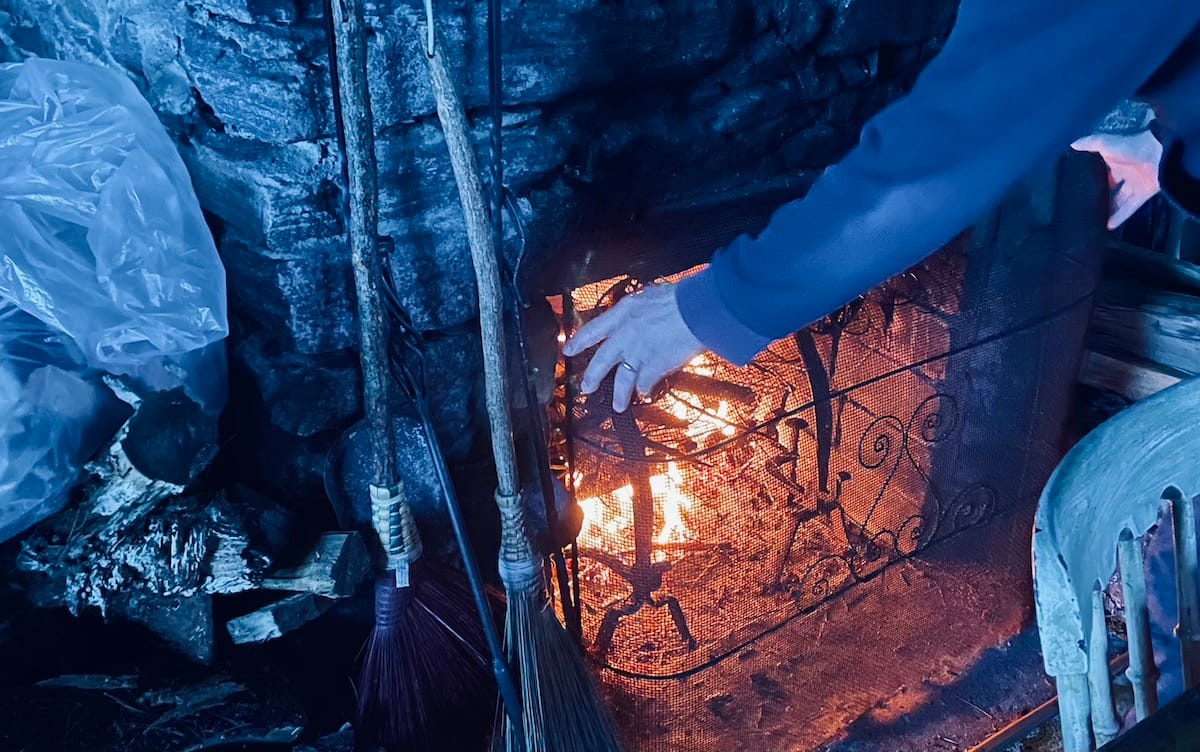
I was off in the woods for the weekend, playing Dungeons & Dragons and generally freezing my balls off (in a good way). The mist rising off the lake in the too-cold morning. The smell of snow — seriously! that smell! — on the wind as you shut the door at night. A big, very old, very stone fireplace, chattering away at its sentinel trio of rocking chairs. Not wanting to get out of the sleeping bag because in here, for this quiet moment, everything is perfect.
It ended up being a kind of character-creation lollapalooza for me, and reconnected me completely with my love of the game. It turns out, what I love about these TTRPGs is the roleplaying, which isn’t, I suppose, that unusual, except it seems to get lost in the shuffle sometimes between all the min/maxing and dice mechanics and whatnot. But between Mothership, D&D, and Shadowdark, I created three characters, and they were all wonderful to play:
- Big Sully — they/them — a big, queer trucker in space (I kind of modeled them on Scorpia from She-Ra and the Princesses of Power, and that was before they started turning into a giant space crab!). As with the best of the Alien franchise, Big Sully was not there to deal with xenomorphs, and wanted, before anything else, to discuss the bonus situation. Also: they went full-ass Lambert when the nasties showed up. I was so proud.
- Ken — he/him — a Barbarian goliath who hates fighting, Ken is sad because he always gets roped into fighting anyway, because he’s so big. (This was unintentionally accentuated by the fact that at 8′, Ken was twice the size of the next-largest member of his party, and four times the size of the smallest.) Ken’s a farmer, a pacifist, and offers adversaries the opportunity to negotiate, which they never take. As a Barbarian, he has a Rage mechanic (kind of like Hulking out), and on his fifth or sixth failed attempt to negotiate, he could be heard screaming “They never listen! THEY NEVER!! LISTEN!!!” before beating a foe’s brains in.
- Green Larry — he/him — an absolute lunatic goblin trapped in the Underdark with one hit point and a pole. Everyone in the party wanted to kill him immediately — even I thought he would die immediately — so naturally, he survived till we stopped playing.
Anyway, I liked this lot so much I am putting them in my permanent character bank and/or repurposing them as NPCs for an upcoming campaign.
How my TIFF changed
Naturally at this time of year, people ask me about my Toronto film festival plans, often with a preemptive “did working there permanently sour your relationship with the festival?”
The answer to the preempt is no, not really. When I left the job last year I was surprised (and relieved) by how quickly the psychological smear of the place washed off; it was a strange and sometimes silly place to work (like most organizations in the arts, I expect), but the insider mentality was fairly quickly dispelled by the normal perspectives of normal life.
That being said, what really changed re: my relationship with TIFF was my relationship with movies.
No matter where we are in the post-pandemic, post-streaming wars reality — which I view, largely, as corporations (like the studios) and organizations (like TIFF) trying to wind back the clock to a halcyon 2019 where their business felt safe and secure* — the actual reality is that, much like with other new premises such as remote work, there is no going back. The last five years opened the window on alternate ways of doing things (whether they are “better,” “worse,” or just “different” is unimportant), and un-ringing those bells, in the long term, will prove to be impossible.
*As a former Mamo co-host, I am also bound to remind all and sundry here that cinematic exhibition was already dying in the 2010s, and that the end of that model of experiencing movies, along with the closing of that era of movies’ cultural relevance, was going to be upon us by 2030 anyway.
For me personally, a few things concatenated during the pandemic that had always been nascently true but now felt fulsome:
- I don’t see more than 20 movies in a theatre in a year anymore;
- I don’t talk to people during movies, so seeing a movie as a social event has become increasingly irrelevant to me, largely reserved for Marvel movies and/or “a Barbenheimer”; and
- Home theatre, even at the minimal level that I play within it, provides a better and more consistent experience than the dominant theatrical monopoly in Canada, Cineplex.
Add to this, a couple of things that are specific to TIFF:
- I don’t care about seeing celebrities, or hearing Q&As.
- Everything that plays TIFF is findable after the fact as either a theatrical release, a digital release, or (in dwindlingly rare cases) a bootleg, at a substantially fractional price point compared to the “event” ticket prices of the festival.
All of this boils down to: the mad rush that used to consume me in August/September to cram as many as 50 movies into that 10-day span is a part of my life that is now long, long behind me.
It doesn’t suit my mindset anymore, meaning that I no longer think that “gorging” is the optimal mode in which I engage with art. I’ve become more reflective in my relationship with the thing, and prefer to give each individual work time to breathe. Seeing a movie a week feels like the right thing, these days. “You’re this week’s movie!” gives an individual film some centrality and focus that I never really gave any of these things before.
But moreover, I think inevitably, movies hit less for me now, by dint of my having seen so many of them. The highs can still be scaled, but the fatty middle — the three-stars-out-of-five — have become the norm. Most movies, and possibly most things in the universe, are “pretty good” or “good,” because artmaking is hard, patterns are easy, and we all get better at foreseeing invention. I think this is another reason I’m going slower, and being more selective: I’d rather see one really great movie next week — a Close Your Eyes or I Saw The TV Glow — than ten good ones.
Pattern recognition
Now back to the preemptive question. Something I’m painfully aware of lately — likely due to other factors, having nothing to do with movies or TIFF — is the degree to which everyone has a simulation of me in their head, and that it’s one that I increasingly do not recognize.
I was re-reading my Richard Dawkins a couple months ago — yes, the man is a dingbat, but The God Delusion informed my atheism in a pretty profound way a couple decades back, and still does — and was reminded once again that, among our many other evolutionary advantages, human beings developed superb, if myopic, pattern recognition abilities, mostly to keep us from being killed. We’re all running a complex virtual reality simulation in our heads, one which we almost uniformly believe is “real life,” but is actually a series of heuristic shortcuts, interpretations, and assumptions meant to keep us from being second-by-second paralyzed by all the overwhelming informational inputs we’re constantly being called upon to process.
I think what’s been interesting for me is watching some of the key assumptions that inform the pattern that is “Matthew” in most of my friends’ minds, people who are very dear to me and know me quite well, turn out to be outdated, or outright incorrect. You really see the incompleteness of the simulation when you pull out what was, to most, a key support column of the whole structure. To wit: you pull “this guy always goes to TIFF!” out, and suddenly a lot of people are asking, “who are you?!” with a sense of profound, even existential, uncertainty.
I love it. It’s the chaos goblin in me again (perhaps I will permanently name him Green Larry?), the part of myself who simply cannot stop from locating the hidden assumptions in any plan or argument, and start pulling at them. More than anything, I like to see people reminded that none of this is stable, no matter how much we want or need it to be. Stability does not exist, and grasping for it is the cause of suffering.
It is, I admit, somewhat more vertiginous out here in freefall, but — back to the virtual reality simulation we’re all running in our heads — freefall is also our true state. The planet is plunging through nothingness; we just can’t see or feel it because our VR edits it out to keep us from shitting our pants every day when we wake up. Everything around us is either growing or rotting. Our ability to elide these points do not, of course, mean they aren’t happening.
And the adventure continues
I finished a revision of my not-for-profit workplace comedy this week, and I am quite happy with it. I’ll be sending that out to readers for some feedback soon. In the meantime, I’m leaving TV scripts behind for a few months to crack a spec feature I’ve been dying to write all year — a dash of Moon Knight, a bit of Horizon: Zero Dawn, and a whole lotta post-apocalyptic Indiana Jones. More about that in the weeks and months to come.
Meanwhile, here are some links:
- Helena Fitzgerald excels at weaving the personal experience of seeing a film into her writing about the film itself, a brick-by-brick assertion that the premise of objectivity in our understanding of art is not just false but pathetic, a gaming system invented by dudebros trying to “win” opinions like they win video games. Anyway, here’s Helena on The Banshees of Inisherin. (Bright Wall/Dark Room)
- Francis, that whacko, brought Megalopolis to TIFF, and I couldn’t be happier. (Letterboxd)
- Lord knows, I have serious frustrations with one of the hosts’ persistent habit of throwing obstructions in the way of her own and her co-host’s intelligent commentary, but that said, if you’re watching Rings of Power this season (and you should be!), House of R is an indispensable companion. (The Ringer)
- Bulletin: local nutbar at it again (jokes, this is wonderful) (Variety)
- I’m still pre-production on any more YouTube videos but you can watch this one from a couple weeks back if you like, about the Young Jedi Adventures toys. I think it’s darling! (YouTube)

